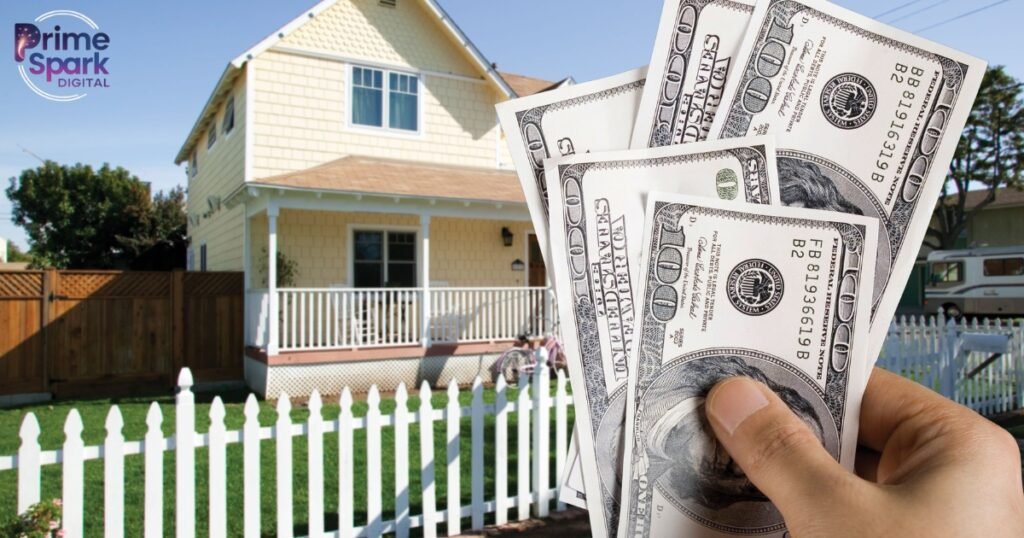What is in-house financing?
In house financing is changing the way people buy cars, furniture, electronics, and even get medical procedures. Instead of borrowing from third-party lenders, more consumers are choosing to get credit directly from the seller. This type of direct consumer lending makes the purchase process easier and often faster. Businesses offering store financing give buyers more flexibility, especially those with lower credit scores. With point-of-sale financing growing through apps and tech platforms, it’s becoming a smart option for both companies and customers. Whether you’re buying a vehicle or upgrading your home, in house financing offers new ways to manage your money, build customer loyalty through financing, and increase access to larger purchases.
How does in-house financing work?
You pick the product or service. Then the seller checks your credit and offers you a payment plan. You agree, sign the papers, and make payments to them every month. That’s how in-house financing works in simple terms.
Most businesses today use fintech credit platforms to make the process smooth. This lets them offer instant credit approval at checkout. Some even use Buy Now Pay Later systems like Klarna or Afterpay. Others integrate tools like AutoFi integration in auto dealerships for fast loan setups.
In-house financing vs third-party lending: Key Differences
| Feature | In-House Financing | Third-Party Lending |
| Credit Check | Flexible | Strict |
| Approval Speed | Fast | Slow |
| Loan Control | Retailer | Bank or Credit Union |
| Interest Rate Flexibility | Custom | Standardized |
| Customer Relationship | Direct | Indirect |
In-house financing vs bank loan comparisons show that direct retailer lending gives faster approvals. Banks offer better regulation but less flexibility. With in-house credit, sellers may overlook a low score if they trust you’ll pay. That’s why it helps people with bad credit or no credit.
Who can benefit from in-house financing?

People with poor credit or no credit history can benefit the most. Many businesses say “Is in-house financing good for bad credit?” Yes, because approvals don’t always depend on high credit scores. As long as you have steady income and can pay monthly, you often qualify.
Small business owners or startups also benefit. They may use equipment financing through store credit. For personal needs, cosmetic procedure loans or appliance purchases are easy to get with store financing. The flexible process helps people who can’t wait for slow bank approvals.
Why do businesses offer in-house financing?
The main reason is control. When a business lends directly, they don’t share profit with banks. They also boost sales. Offering consumer credit limits encourages bigger purchases. Plus, they earn revenue from lending itself.
Another reason is building customer loyalty through financing. People who get approved quickly are more likely to return. Retail credit options also give businesses an edge in competitive markets. That’s why more retailers now offer it.
How in-house car financing works (with example)
Car dealers often offer auto dealership loans directly. Let’s say you walk into a used car lot with no bank pre-approval. They check your ID, income, and maybe your job. You agree to a payment plan, then drive off with the car. This is in-house car financing in action.
For example, Ford Credit offers buyers direct loans with flexible car loan options. Using tools like AutoFi, dealerships can approve loans in minutes. They even offer promotional car financing with low rates for short terms.
How to set up in-house financing: Steps & Requirements

Setting up in-house credit needs planning. First, the business must create a legal process to lend money. This includes terms, agreements, and handling missed payments. A financing department is set up to track payments and send reminders.
Next, the business chooses tools. Many use POS financing systems to offer credit at checkout. They also need credit evaluation software to decide quickly. Businesses must follow laws, or they risk lawsuits or penalties.
Tech Stack & Tools Needed for In-House Financing
To manage loans, businesses use systems that connect with sales and payments. Popular choices are:
| Tool Type | Example Tools |
| Loan Management | Zoot, Lendflow |
| CRM Integration | Salesforce, HubSpot |
| POS and Checkout Credit | Square, Affirm |
| Auto Dealership Financing | AutoFi, Dealertrack |
These tools help track credit, approve fast, and keep customers updated. They reduce human error and help follow the law.
Common Mistakes to Avoid When Offering In-House Financing
One mistake is not checking if the customer can actually pay. Giving loans without proper credit decision rules can lead to losses. Another is unclear terms. If the buyer doesn’t understand the deal, disputes happen.
Some stores forget to follow laws. Others don’t set a system for late payments. Using bad software also hurts. Make sure your system is safe, fast, and legal. Otherwise, you could lose more than you gain.
Is future of in-house financing better? Pros and cons compared
Pros and cons of in-house auto loans show both sides. Banks give lower rates and more trust. But they’re slow and harder to get approved. In-house loans are fast, flexible, and easy for bad credit.
| Type | Pros | Cons |
| Bank Loan | Low interest, safe | Slow, strict rules |
| In-House Loan | Fast, flexible, bad credit friendly | Higher rates, less oversight |
So, should I choose dealer financing? It depends. If you need speed and have low credit, it’s a good option. If you qualify for a bank loan, it might save you money.
The future of in-house financing: Digitization and trends

Technology is making this faster and safer. With AutoFi, loans are approved in seconds. AI helps reduce fraud and match the right loan to the right person. Is point-of-sale credit safe? It’s safer now than ever before.
In the future, more businesses will offer loans directly. Retailer loan terms will get better. Apps and platforms will help more people with credit-backed purchases. Expect Buy Now Pay Later to grow in every industry, from dental work to furniture.
Conclusion: Is in-house financing right for you or your business?
If you want control and better sales, in-house financing helps your business grow. If you’re a buyer with poor credit or want fast service, it’s a great choice. The key is to understand the risks and make smart choices.
So, can I finance a car without a bank? Yes. And not just a car — appliances, surgeries, and more. Just ask, do stores offer financing for appliances? You’ll be surprised how many say yes.
Whether you’re a seller or buyer, this kind of credit is changing how the world shops — one payment plan at a time.
FAQs
What is an in-house financing?
In-house financing is when a retailer or seller directly provides a loan to customers, bypassing banks or third-party lenders. It allows buyers to finance purchases right at the point of sale.
Is it good to do in-house financing?
Yes, in-house financing can be convenient and quicker, often with easier approval and flexible terms. However, interest rates may be higher compared to traditional lenders.
What are the cons of in-house financing?
In-house financing can come with higher interest rates, extra fees, and limited options for refinancing. It may also tie you to one retailer’s credit terms.
Is it easier to get approved with in-house financing?
Generally, yes. Retailers often have more flexible credit criteria, making it easier for buyers with lower credit scores to qualify.
Does in-house financing require a down payment?
Sometimes a down payment is required, but the amount varies by retailer and loan type. Some plans may offer zero down options.
What credit score do I need to finance a house?
For home financing, a credit score of 620 or higher is typically needed, though better scores secure lower interest rates. In-house financing requirements may differ.

I’m Talal Khan founder of Prime Spark Digital, a passionate blogger, digital enthusiast, and an SEO specialist. With a keen eye for digital trends and a dedication to delivering value-packed content. I helps readers stay informed and inspired in the ever-evolving world of online media. Thanks for stopping by





